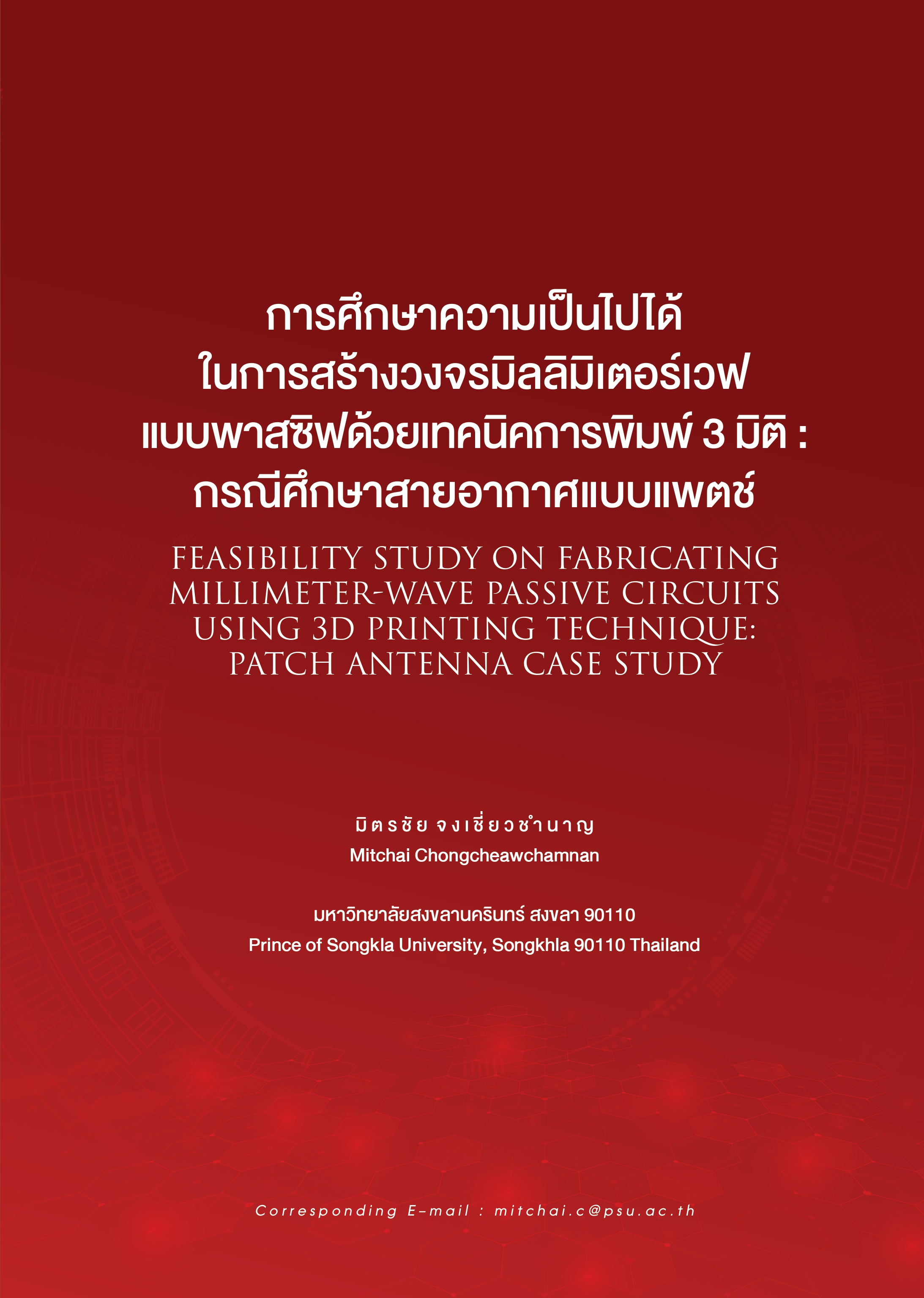Feasibility Study on Fabricating Millimeter-wave Passive Circuits using 3D Printing Technique: Patch Antenna Case Study
Keywords:
millimeter-wave, passive circuit, 3D printing technique, antennaAbstract
This article studies the feasibility of utilizing 3D printers to fabricate millimeter-wave passive circuits. In this research, 3D printers were studied and categorized into 3 groups of techniques; Fused Deposition Modeling/ Fused Filament Fabrication (FDM/ FFF), Stereolithography (SLA), and Selective Laser Sintering (SLS). The advantages, disadvantages, and limitations of each technique were analyzed, taking into account their technical competency, workpiece quality, and cost. Subsequently, the potential of creating millimeter-wave circuits using the aforementioned 3D printing techniques was evaluated. The case study involved fabricating a microstrip-fed patch antenna at 40 GHz using each of the three printing techniques. The dimensional variations of the microstrip line and the impact of surface roughness resulting from each 3D printing technique, which could lead to increased losses in the circuit, were also assessed. The study found that FDM/ FFF and SLA techniques were more suitable for fabricating millimeter-wave circuits compared to the SLS technique due to lower dimensional variations and smoother surface finishes, and the performance of the millimeter-wave circuits created met the design.
References
Behzadnezhad, B., Collick, B. D., Behdad, N., & McMillan, A. B. (2018). Dielectric Properties of 3D-Printed Materials for Anatomy Specific 3D-Printed MRI coils. Journal of magnetic resonance (San Diego, Calif. : 1997), 289, 113–121. https://doi.org/10.1016/j.jmr.2018.02.013
Chen, A. (2019). Detail comparison of 3D printing methods: SLS vs FDM & SLA vs DLP. C-Mac Industries Pty Ltd. https://www.cmac.com.au/blog/3d-printing-methods-side-by-side-comparison-sls-vs-fdm-sla-vs-dlp
Electromagnetics and Microwave Engineering. (n.d.). Microstrip Line Calculator. https://www.emtalk.com/mscalc.php
Kruchkin, A. (2016). Innovation in Creation: Demand Rises While Prices Drop for 3D Printing Machines. Manufacturing Tomorrow. https://www.manufacturingtomorrow.com/article/2016/02/innovation-in-creation-demand-rises-while-prices-drop-for-3d-printing-machines/7631/
Lis, M., Plaut, M., Zai, A., Cipolle, D., Russo, J., Lewis, J., & Fedynyshyn, T. (2016). Polymer Dielectrics for 3D-Printed RF Devices in the Ka Band. Advanced Materials Technologies, 1(2), 1-6. https://doi.org/10.1002/admt.201600027
Monroe Engineering, LLC, Inc. (2020). 3D Printing Speed: How It Affects Build Time. https://monroeengineering.com/blog/3d-printing-speed-how-it-affects-build-time/
Nutma, M. (2019). A quick guide to dimensional accuracy for 3D printing. VoxelMatters. https://www.3dprintingmedia.network/quick-guide-dimensional-accuracy-3d-printing/
Pasternack. (n.d.). Microstrip Patch Antenna Calculator. https://www.pasternack.com/t-calculator-microstrip-ant.aspx
Polymer Plastics Company, LC. (n.d.). Rexolite. https://www.polymerplastics.com/rexolite-high-performance-plastic.shtml
Stratasys Ltd. (2023). F120 3D Printer Support. https://support.stratasys.com/en/Printers/FDM-Legacy/F120
TWI Ltd. (n.d.). What is Binder Jetting? (Definition, Pros, Cons and Uses). https://www.twi-global.com/technical-knowledge/faqs/what-is-binder-jetting#Advantages

Downloads
Published
How to Cite
Issue
Section
License
Copyright (c) 2024 Journal of Digital Communications

This work is licensed under a Creative Commons Attribution-NonCommercial-NoDerivatives 4.0 International License.
The Office of the NBTC holds the copyright of articles appearing in the journal. The Office of the NBTC allows the public or individuals to distribute, copy, or republish the work under a Creative Commons license (CC), with attribution (BY), No Derivatives (ND) and NonCommercial (NC); unless written permission is received from the Office of the NBTC.
Text, tables, and figures that appear in articles accepted for publication in this journal are personal opinion and responsibility of the author, and not binding on the NBTC and the Office of the NBTC. In case of errors, each author is solely responsible for their own article, and not concerning the NBTC and the NBTC Office in any way.


